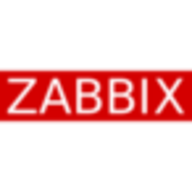

OpenText SiteScope and Zabbix compete in the IT monitoring solutions category. Zabbix seems to have the upper hand due to its extended capabilities and flexibility.
What features are offered by OpenText SiteScope in comparison to Zabbix?OpenText SiteScope excels in agentless monitoring, robust performance metrics, and various integrations. Zabbix offers open-source flexibility, extensive customization, and a large community that provides plugins and scripts. SiteScope’s seamless integration with other OpenText products also provides an advantage in specific environments.
What areas of improvement can be found in OpenText SiteScope in comparison to Zabbix?Users suggest enhancing SiteScope’s scalability and modernizing some aspects of its overall experience. Zabbix reviews emphasize the need for improved documentation and easing the complexity for new users. SiteScope could benefit from improving its user interface, while Zabbix could address the steep learning curve for beginners.
How is the ease of deployment and customer service of OpenText SiteScope in comparison to Zabbix?SiteScope deployment is straightforward and supported by professional customer service. Zabbix’s deployment, although well-documented, might be challenging for less experienced users due to its open-source model. Zabbix community support is strong but doesn’t entirely replace the comprehensive customer service provided by SiteScope.
What setup costs and ROI can be seen with OpenText SiteScope in comparison to Zabbix?SiteScope's setup cost is often higher, justified by its extensive features and dedicated support. Zabbix, being open-source, has lower initial costs and higher ROI in flexible budgets, but users must consider potential hidden costs in deployment and configuration complexity.
| Product | Market Share (%) |
|---|---|
| Zabbix | 3.2% |
| OpenText SiteScope | 0.6% |
| Other | 96.2% |


| Company Size | Count |
|---|---|
| Small Business | 8 |
| Midsize Enterprise | 4 |
| Large Enterprise | 20 |
| Company Size | Count |
|---|---|
| Small Business | 53 |
| Midsize Enterprise | 23 |
| Large Enterprise | 34 |
OpenText SiteScope is an agentless monitoring program that tracks the availability and performance of distributed IT infrastructures such as servers, network devices and services, applications and application components, virtualization software, operating systems, and other IT enterprise components.
OpenText SiteScope is an autonomous hybrid IT monitoring system that can monitor more than 100 different types of IT components in real time, thanks to a lightweight and highly customizable remote access architecture.
With OpenText SiteScope, IT teams can get the data they need to keep on top of problems and eliminate bottlenecks before they become major concerns.
OpenText SiteScope can reduce total cost of ownership (TCO) by utilizing agentless technology, which eliminates the need to install and monitor agents on each box. Manual activities can be automated, and teams can save time and effort by using pre-packaged solution templates.
OpenText SiteScope Features
OpenText SiteScope has many valuable key features. Some of the most useful ones include:
Zabbix is an open-source monitoring software that provides real-time monitoring and alerting for servers, networks, applications, and services.
It offers a wide range of features including data collection, visualization, and reporting.
With its user-friendly interface and customizable dashboards, Zabbix helps organizations ensure the availability and performance of their IT infrastructure.
We monitor all Application Performance Monitoring (APM) and Observability reviews to prevent fraudulent reviews and keep review quality high. We do not post reviews by company employees or direct competitors. We validate each review for authenticity via cross-reference with LinkedIn, and personal follow-up with the reviewer when necessary.